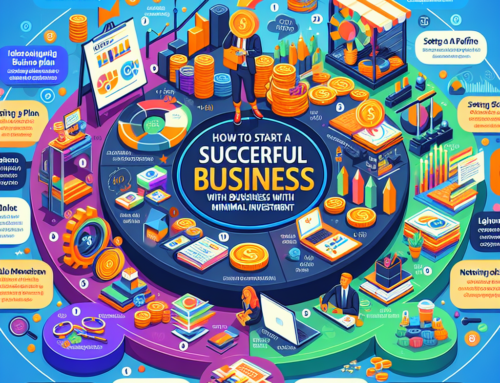
The Importance of Mentorship for Women in the Workplace
Sheryl Sandberg’s book Lean In: Women, Work, and Leadership has become a must-read for women in the workplace. Sandberg, the Chief Operating Officer of Facebook, shares her personal experiences and insights on how women can achieve their full potential in their careers. One of the key lessons from the book is the importance of mentorship for women in the workplace.
Mentorship is a relationship between a more experienced and knowledgeable person (the mentor) and a less experienced person (the mentee). It is a valuable tool for personal and professional growth, and it can be especially beneficial for women in the workplace. Sandberg emphasizes the importance of mentorship in her book, and she shares her own experiences of having mentors who have helped her throughout her career.
One of the main reasons why mentorship is crucial for women in the workplace is because it provides them with guidance and support. Women often face unique challenges in the workplace, such as gender bias and the glass ceiling. Having a mentor who has navigated these challenges can provide valuable insights and advice on how to overcome them. A mentor can also offer emotional support and encouragement, which can be crucial for women who may feel isolated or undervalued in their workplace.
Moreover, mentorship can also help women build their confidence and self-esteem. Many women struggle with imposter syndrome, the feeling of not belonging or being good enough in their roles. A mentor can help combat these feelings by providing positive feedback and highlighting the mentee’s strengths and accomplishments. This can help women develop a more positive self-image and believe in their abilities, which can ultimately lead to career advancement.
In addition to guidance and support, mentorship can also provide women with valuable networking opportunities. Women are often underrepresented in leadership positions, and this can make it challenging to find female role models and mentors in their industry. A mentor can introduce their mentee to their professional network, which can open doors to new opportunities and connections. This can be especially beneficial for women who may not have access to these networks on their own.
Furthermore, mentorship can also help women develop important skills and knowledge. A mentor can share their expertise and experience, providing the mentee with valuable insights and advice on how to navigate their career. This can include practical skills such as negotiation and leadership, as well as industry-specific knowledge. By learning from someone who has already achieved success in their field, women can accelerate their own career growth and development.
It is important to note that mentorship is a two-way street. While the mentee can benefit greatly from the relationship, the mentor can also gain valuable insights and perspectives from their mentee. This is especially true for women in leadership positions who may not have many female colleagues to bounce ideas off of. Mentoring can also be a rewarding experience for the mentor, as they get to share their knowledge and help shape the next generation of female leaders.
In conclusion, mentorship is a crucial tool for women in the workplace. It provides guidance, support, networking opportunities, and valuable skills and knowledge. Sheryl Sandberg’s book Lean In highlights the importance of mentorship and encourages women to seek out mentors who can help them achieve their full potential. Whether you are a mentee looking for a mentor or a successful woman looking to give back, mentorship is a powerful tool that can help break down barriers and pave the way for more women in leadership roles.
Breaking Through the Glass Ceiling: Strategies for Advancing in Male-Dominated Industries
Sheryl Sandberg’s book, Lean In: Women, Work, and Leadership, has become a must-read for women in the corporate world. In this book, Sandberg shares her personal experiences and insights on how women can break through the glass ceiling and advance in male-dominated industries. As a successful businesswoman and the Chief Operating Officer of Facebook, Sandberg’s advice is both practical and empowering. In this section, we will explore some of the key strategies from Lean In that can help women advance in their careers and overcome the challenges of working in male-dominated industries.
The first lesson from Lean In is to “sit at the table.” Sandberg encourages women to take a seat at the table, both literally and figuratively. This means not being afraid to speak up and share your ideas, even if you are the only woman in the room. Many women tend to hold back and wait for an invitation to join the conversation, but Sandberg reminds us that we have to create our own opportunities. By actively participating and contributing, women can make their presence known and gain the respect and recognition they deserve.
Another important strategy for breaking through the glass ceiling is to “make your partner a real partner.” Sandberg emphasizes the importance of having a supportive partner who shares the responsibilities of both work and home. In male-dominated industries, women often face the challenge of balancing their career aspirations with their family responsibilities. By having a partner who is willing to share the load, women can focus on their careers without feeling guilty or overwhelmed. Sandberg also encourages women to choose a partner who respects and supports their career goals, rather than feeling threatened by them.
One of the most significant barriers for women in male-dominated industries is the lack of female role models and mentors. Sandberg addresses this issue by urging women to “find a mentor and be a mentor.” She emphasizes the importance of having someone to look up to and learn from, as well as the value of paying it forward and mentoring other women. In male-dominated industries, it can be challenging to find a female mentor, but Sandberg reminds us that mentors can come in all forms, including male colleagues who support and advocate for women in the workplace.
Sandberg also highlights the importance of “speaking up and owning your achievements.” In male-dominated industries, women often face the challenge of being seen as too aggressive or too passive. Sandberg encourages women to find their own authentic voice and speak up for themselves. She also reminds us that it is essential to take credit for our achievements and not downplay our successes. By owning our achievements, we can break through the stereotypes and biases that hold women back in the workplace.
Finally, Sandberg reminds us that “careers are a jungle gym, not a ladder.” In male-dominated industries, there is often a linear path to success, and women are expected to follow it. However, Sandberg challenges this notion and encourages women to take risks and pursue opportunities that may not fit the traditional career ladder. She also reminds us that it is okay to take breaks and pivot in our careers, as long as we continue to move forward and learn from our experiences.
In conclusion, Sheryl Sandberg’s Lean In offers valuable lessons for women looking to break through the glass ceiling and advance in male-dominated industries. By sitting at the table, having a supportive partner, finding mentors, speaking up, and embracing a non-linear career path, women can overcome the challenges and biases that hold them back. As Sandberg says, “we can each define success for ourselves. But if we do not define it for ourselves, we may be defined by others.” So let us take control of our careers and lean in to our full potential.
Negotiating for What You Deserve: Lessons from Sheryl Sandberg’s Lean In
Sheryl Sandberg, the Chief Operating Officer of Facebook, is a well-known figure in the business world. Her book, Lean In: Women, Work, and Leadership, has become a bestseller and has sparked important conversations about gender equality in the workplace. In this book, Sandberg shares her personal experiences and offers valuable insights on how women can navigate their careers and negotiate for what they deserve. In this section, we will explore some of the key lessons from Sandberg’s book on negotiating for what you deserve.
One of the main lessons from Lean In is the importance of advocating for yourself. Sandberg emphasizes that women often hold themselves back by not speaking up and asking for what they want. She shares her own experience of being offered a job at Google and initially accepting the salary without negotiating. It was only after her brother-in-law pointed out that she was leaving money on the table that she went back and negotiated for a higher salary. Sandberg encourages women to do their research, know their worth, and confidently ask for what they deserve.
Another important lesson from Lean In is the need for women to overcome the fear of being perceived as “too aggressive” or “bossy” when negotiating. Sandberg acknowledges that women often face a double standard when it comes to assertiveness in the workplace. While men are praised for being assertive, women are often labeled as “difficult” or “unlikeable”. Sandberg challenges this stereotype and encourages women to be assertive and confident in their negotiations. She also advises women to find a balance between being assertive and being respectful, as being overly aggressive can also be counterproductive.
In addition to advocating for oneself, Sandberg also stresses the importance of building a support network. She highlights the power of mentorship and sponsorship in helping women advance in their careers. A mentor can provide guidance and advice, while a sponsor can actively advocate for you and open doors for opportunities. Sandberg also emphasizes the importance of having a supportive partner who shares household responsibilities and supports your career goals. This support system can help women overcome the challenges they may face in the workplace and give them the confidence to negotiate for what they deserve.
Another key lesson from Lean In is the importance of understanding and overcoming the gender pay gap. Sandberg shares shocking statistics that show women earn only 77 cents for every dollar earned by men. She also highlights the fact that the pay gap is even wider for women of color. Sandberg encourages women to do their research and know their market value, as well as to be aware of any pay discrepancies in their workplace. She also advises women to negotiate for fair compensation and to not settle for less than what they deserve.
Lastly, Sandberg emphasizes the importance of taking risks and not being afraid of failure. She shares her own experience of taking on a new role at Facebook and initially feeling overwhelmed and unsure of herself. However, she pushed through and learned valuable lessons from her mistakes. Sandberg encourages women to take on new challenges and not let the fear of failure hold them back. She also advises women to not be discouraged by setbacks and to learn from them instead.
In conclusion, Sheryl Sandberg’s Lean In offers valuable lessons for women on negotiating for what they deserve in the workplace. From advocating for oneself and overcoming the fear of being assertive, to building a support network and understanding the gender pay gap, Sandberg’s insights are both empowering and practical. By following these lessons, women can take control of their careers and work towards closing the gender gap in the workplace. As Sandberg says, “We can each define ambition and progress for ourselves. The goal is to work toward a world where expectations are not set by the stereotypes that hold us back, but by our personal passion, talents, and interests.”
The Myth of ’Having it All’: Balancing Career and Family as a Working Woman
Sheryl Sandberg, the Chief Operating Officer of Facebook, is a well-known figure in the business world. Her book, Lean In: Women, Work, and Leadership, has sparked conversations and debates about women in the workplace and the challenges they face. One of the most talked-about topics from the book is the myth of ’having it all’ and the struggle of balancing career and family as a working woman.
In today’s society, women are expected to excel in both their professional and personal lives. They are told that they can have a successful career while also being a devoted wife and mother. However, Sandberg argues that this idea of ’having it all’ is a myth and puts unnecessary pressure on women.
Sandberg shares her own experience of trying to balance her career and family life. She admits that she has struggled with guilt and self-doubt, feeling like she was not doing enough in either aspect of her life. This is a common feeling among working women, who often feel like they are not measuring up to society’s expectations.
The truth is, it is nearly impossible to have a perfect balance between career and family. Sandberg explains that there will always be sacrifices and trade-offs, and it is important for women to accept this reality. Instead of striving for perfection, she encourages women to focus on what is important to them and make choices that align with their values and goals.
One of the main reasons why women struggle with balancing career and family is the lack of support and resources. Sandberg highlights the importance of having a supportive partner and a workplace that offers flexible policies. She also emphasizes the need for women to advocate for themselves and ask for what they need. This can be challenging, as women are often afraid of being seen as weak or not committed to their careers. However, Sandberg reminds us that it is not a sign of weakness to ask for help or accommodations, and it is necessary for women to succeed in both their personal and professional lives.
Another aspect that Sandberg addresses is the societal expectations placed on women. Women are often expected to take on the majority of the household and childcare responsibilities, even if they have a full-time job. This can lead to burnout and resentment, as women are trying to juggle multiple roles without any support. Sandberg challenges these gender norms and encourages men to take on an equal share of household and childcare responsibilities. She also calls for companies to provide more support for working parents, such as on-site childcare and paid parental leave.
Sandberg also addresses the issue of guilt that many working mothers face. Women often feel guilty for not spending enough time with their children or guilty for not being fully committed to their careers. Sandberg reminds us that guilt is a natural feeling, but it is important to not let it consume us. She encourages women to let go of the guilt and focus on being present in the moment, whether it is at work or with their family.
In conclusion, the myth of ’having it all’ is a harmful concept that puts unnecessary pressure on women. Sandberg’s book, Lean In, offers valuable lessons for working women, including the importance of making choices that align with our values, advocating for ourselves, and challenging societal expectations. It is time to let go of the idea of perfection and instead focus on finding a balance that works for us as individuals. As Sandberg says, ”We need to accept that we can’t have it all at the same time. We need to prioritize and make choices.”
Creating a Supportive and Inclusive Work Culture for Women: Lessons from Lean In
Sheryl Sandberg’s book Lean In: Women, Work, and Leadership has sparked important conversations about gender equality in the workplace. As the Chief Operating Officer of Facebook and one of the most influential women in the business world, Sandberg shares her personal experiences and offers valuable insights on how women can achieve their full potential in their careers. One of the key lessons from her book is the importance of creating a supportive and inclusive work culture for women.
In Lean In, Sandberg highlights the challenges that women face in the workplace, including gender bias, lack of representation in leadership positions, and the pressure to balance work and family responsibilities. She also emphasizes the role of companies and organizations in creating an environment where women can thrive and succeed. So, what can we learn from Sandberg’s book about creating a supportive and inclusive work culture for women?
First and foremost, Sandberg stresses the importance of addressing gender bias in the workplace. She shares her own experiences of being underestimated and overlooked because of her gender, and how she overcame these challenges by speaking up and advocating for herself. She also encourages women to support and mentor each other, as well as to challenge the status quo and push for change within their organizations.
Another key lesson from Lean In is the need for companies to have policies and practices that support working mothers. Sandberg points out that women are often penalized for taking time off for maternity leave or for needing flexible work arrangements to care for their children. This not only affects their career progression but also perpetuates the stereotype that women are less committed to their jobs. Sandberg suggests that companies should offer paid parental leave, flexible work hours, and on-site childcare to support working mothers and create a more inclusive work culture.
In addition to addressing gender bias and supporting working mothers, Sandberg also emphasizes the importance of diversity and inclusion in the workplace. She argues that having a diverse workforce, including women and people from different backgrounds, leads to better decision-making and innovation. Companies should actively seek out and promote diversity in their hiring and promotion processes, and create a culture where everyone feels valued and included.
Sandberg also highlights the role of male allies in creating a supportive work culture for women. She encourages men to be aware of their privilege and to use it to advocate for gender equality in the workplace. This can include speaking up against sexist comments or behaviors, promoting women’s voices and ideas, and actively supporting women’s career advancement. Sandberg believes that men and women working together can create a more inclusive and equal workplace for all.
Finally, Sandberg emphasizes the importance of leadership in creating a supportive and inclusive work culture for women. She argues that leaders have the power to set the tone and values of their organizations, and they should use this power to promote gender equality and create a culture of respect and inclusivity. This can include setting diversity and inclusion goals, providing training on unconscious bias, and holding leaders accountable for creating an inclusive work environment.
In conclusion, Sheryl Sandberg’s Lean In offers valuable lessons on creating a supportive and inclusive work culture for women. From addressing gender bias and supporting working mothers to promoting diversity and inclusion and involving male allies, there are many ways that companies and organizations can create an environment where women can thrive and succeed. By implementing these lessons, we can move closer to achieving gender equality in the workplace and creating a more inclusive and fair society for all.
We have lots of exciting coming events in Entrepreneurship, Investing and Personal Development. You can find them all here:
www.swedishwealthinstitute.se/events




